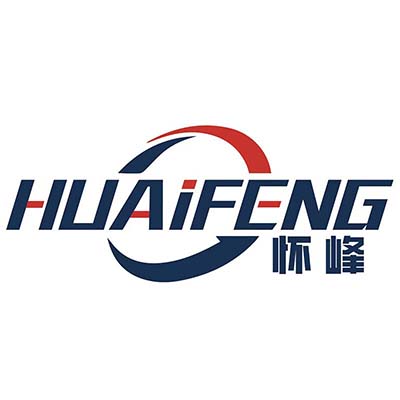
{{ lang?'快速选择':'Quick select' }}:
“智能制造”是我国制造业转型升级的主攻方向,也是实现《中国制造2025》国家战略的重要抓手。而待成功转型后,制造业将呈现怎样的形态?
“黑灯工厂”或为我们勾勒出一个制造业发展的目标蓝图。那么,其将给我们带来哪些启迪?以下,enjoy:
黑灯工厂的技术应用及特征
进入一家黑灯工厂,我们宛如走进科幻大片现场。
试想一下:在黑暗的工厂内,生产线上空无一人,只有设备状态指示灯、品质检测灯及激光发射器的微光彼此闪烁。一排排零部件有条不紊地传输运转,高大的机械臂灵活地分拣物资……整个工厂具备自我思考、有序生产的能力,仿佛一个有智慧的机械生物体。
以上便是理想的黑灯工厂,也即智慧工厂。工厂内的整个生产过程——从原材料的交付、加工,产品运输、检测,到最终的成品交付——完全由自动控制的机器进行,可以在关灯状态下运转自如。
黑灯工厂得以实现的基础,莫过于当下最前沿的科技,包括人工智能、物联网、5G、大数据、云计算、边缘计算、机器视觉等。这些技术的汇总集成,实现了工厂内生产、设备、物流、能环、安全5大核心要素的效能提升。
通过研究国内外黑灯工厂,我们发现其普遍具备如下特征:
一定的自主性
系统可以收集和理解来自外部世界和自身的信息,并利用这些信息分析、判断和规划自己的行为。
整合与拓展性
其能整合多项技术、算法,如机器视觉、5G、人工智能等开展视觉信号处理、信息推理预测等实践工作,并结合工厂运作中的实际情况不断拓展技术和功能。
协调性、重组性和扩张性
系统中的每一个组成部分都可以根据自身工作任务形成最佳的系统结构。
自学习和维护能力
通过系统自学习功能,可以在制造过程中对数据库进行补充和更新,自动执行故障诊断,通过故障排除、维护或通知来不断更新迭代系统。
人机协作互补
理想状态下,黑灯工厂无需人工操作。但在现阶段的实际应用中,黑灯工厂至少在某些情况下仍需人工干预,如检查和维护方面。
建设成本高昂,黑灯工厂价值何在?
黑灯工厂能够有效降低人力成本、提高生产效率,但显而易见的是,建设的成本自然不低。据相关媒体报道,目前投资一条自动化生产线,大概需要800万元,且该价格还会根据行业特殊性而有所波动。那么企业重金建设黑灯工厂,究竟有哪些价值与意义?
企业:黑灯工厂是品牌催化剂,也是关键业务承载体
一方面,随着大众对科技认知度及关注度的提升,建设酷炫的“黑灯工厂”有益于提升大众心中的品牌“科技值”,有效增强品牌好感度;
另一方面,黑灯工厂的自动化流程相较人工可明显提升工作效率。如果通过黑灯工厂来布局企业关键业务,长期而言可有效通过规模化生产与竞争壁垒而实现边际收益递增。
行业:黑灯工厂是未来制造工艺和工业流程的探路者
集成了前沿技术的黑灯工厂,更为制造业各细分领域利用信息技术实现智能化、数字化升级提供了模板和借鉴。
尽管技术要素不断迭代升级,但受限于技术的成熟程度及其在行业中的普及程度,黑灯工厂在现实应用中仍面临不少问题,如自动化产线更有利于规模化生产,而当下制造业则更强调实现产品个性化和定制化的柔性生产;此外,不同行业的生产工艺、流程差异较大,对技术的通用性提出了更大的挑战。
因此,黑灯工厂可以作为探路者,为制造业各领域的智能化转型提前探测问题与难点。同时,其也可探索解决方案,以克服行业普遍面临的人力成本上升、熟练工人短缺、工作流程不够柔性、供应链上下游协同较差等难题,助力我国制造业加速转型升级。
迈向工业4.0时代
智能制造转型加速行进
根据工信部最新数据显示,“十三五”时期,我国工业增加值由23.5万亿元增加到31.3万亿元,在此期间所占世界制造业的比重接近30%。实际上,从2010年以来至今,我国已连续11年成为全球最大的制造业国家。
而在我国制造业转型升级趋势下,国内一些头部制造业企业早已率先试水黑灯工厂,且已取得“降本增效”的积极成效。
如联想集团武汉产业基地于2020年中投入了自主开发的业界首条5G+IoT(物联网)自动化组装线“量子线”,使其3C设备组装产线的自动化率提升2倍。与传统产线相比,人员精简45%。
除头部制造业企业积极建设黑灯工厂外,一些具有技术优势的科技新星,也通过自身业务赋能传统制造业企业兴建黑灯工厂。
近日,联想之星所投企业旷视科技为国内一家电机及驱动制造商打造了集软硬件为一体的智能化“黑灯工厂”样板车间。借助旷视所提供的智慧物流解决方案,这一“黑灯工厂”通过应用机器人、AI、物流系统等技术对工厂和仓储空间进行了数字化、智能化升级,不仅攻克了复杂环境下多类型设备的集成问题,还将多层次控制系统打通,促进物流环节和生产环节的融合和协同管理,为行业提供了可参考的样本。据悉,该案例还成功入选了国家发展改革委“物流业制造业深度融合创新发展案例”。
总而言之,黑灯工厂已为我国制造业转型升级提供了确切方向,而监管层更是从顶层设计方面予以加速引导。
2021年4月,工信部发布《“十四五”智能制造发展规划(征求意见稿)》,提出到2025年,规模以上制造业企业基本普及数字化,重点行业骨干企业初步实现智能转型。要建设2000个以上新技术应用智能场景、1000个以上智能车间、100个以上引领行业发展的标杆智能工厂。到2035年,规模以上制造业企业全面普及数字化。
在政策支持下,相信随着网络传输技术、信息感知技术、机器人技术等相关应用技术的不断提升与成熟,我国制造业各细分领域将在未来涌现出更多黑灯工厂。
"Intelligent manufacturing" is the main direction of transformation and upgrading of China's manufacturing industry, and also an important starting point to realize the national strategy of "Made in China 2025". After successful transformation, what will the manufacturing industry take on?
The "Black Light Factory" may outline a blueprint for the development of the manufacturing industry for us. So, what enlightenment will it bring us? Here, enjoy:
Technical Application and Characteristics of Black Light Factory
Entering a black light factory is like walking into a sci-fi blockbuster scene.
Imagine: in a dark factory, there is no one above the production line, only the equipment status indicator light, quality inspection light, and the faint light of the laser transmitter flickering with each other. The orderly transmission and operation of rows of components, and the flexible sorting of materials by tall robotic arms... The entire factory has the ability to think for itself and produce in an orderly manner, as if it were an intelligent mechanical organism.
The above is the ideal black light factory, also known as a smart factory. The entire production process within the factory - from the delivery and processing of raw materials, product transportation, testing, to the final delivery of finished products - is entirely carried out by automatically controlled machines, which can operate freely with the lights off.
The foundation for the realization of Black Light Factory is nothing more than the most cutting-edge technologies, including artificial intelligence, Internet of Things, 5G, big data, cloud computing, edge computing, machine vision, etc. The integration of these technologies has achieved the efficiency improvement of the five core elements of production, equipment, logistics, energy and environmental protection, and safety in the factory.
Through studying black light factories both domestically and internationally, we have found that they generally possess the following characteristics:
A certain degree of autonomy
The system can collect and understand information from the external world and oneself, and use this information to analyze, judge, and plan one's own behavior.
Integration and scalability
It can integrate multiple technologies and algorithms, such as machine vision, 5G, artificial intelligence, etc., to carry out practical work such as visual signal processing and information inference prediction, and continuously expand its technology and functions based on the actual situation of factory operation.
Coordination, Restructuring, and Expansion
Each component in the system can form the optimal system structure based on its own work tasks.
Self learning and maintenance capabilities
Through the self-learning function of the system, it is possible to supplement and update the database during the manufacturing process, automatically perform fault diagnosis, and continuously update the iterative system through troubleshooting, maintenance, or notification.
Human-computer collaboration and complementarity
In an ideal state, a black light factory does not require manual operation. However, in current practical applications, black light factories still require manual intervention in at least some cases, such as inspection and maintenance.
The construction cost is high, what is the value of a black light factory?
Black light factories can effectively reduce labor costs and improve production efficiency, but it is obvious that the construction cost is naturally not low. According to relevant media reports, currently investing in an automated production line requires approximately 8 million yuan, and the price may fluctuate depending on the industry's unique characteristics. So what is the value and significance of enterprises investing heavily in building black light factories?
Enterprise: Black light factory is a brand catalyst and a key business carrier
On the one hand, with the increasing awareness and attention of the public towards technology, building a cool "black light factory" is beneficial for enhancing the brand's "technological value" in the public's hearts and effectively enhancing brand goodwill;
On the other hand, the automation process of black light factories can significantly improve work efficiency compared to manual work. If the key business of the enterprise is distributed through the black light factory, in the long run, marginal revenue can be increased effectively through large-scale production and competitive barriers.
Industry: Black Light Factory is a Pathfinder for Future Manufacturing Processes and Industrial Processes
The black light factory integrated with cutting-edge technology provides a template and reference for various sub sectors of the manufacturing industry to use information technology to achieve intelligent and digital upgrades.
Despite the continuous iteration and upgrading of technological elements, due to the maturity of the technology and its popularity in the industry, black light factories still face many problems in practical applications. For example, automated production lines are more conducive to large-scale production, while the current manufacturing industry places more emphasis on achieving personalized and customized flexible production of products; In addition, there are significant differences in production processes and processes across different industries, posing greater challenges to the universality of technology.
Therefore, black light factories can serve as explorers to detect problems and difficulties in advance for the intelligent transformation of various fields in the manufacturing industry. At the same time, it can also explore solutions to overcome the common challenges faced by the industry, such as rising labor costs, shortage of skilled workers, insufficient flexibility in workflow, and poor collaboration between upstream and downstream supply chains, to help accelerate the transformation and upgrading of China's manufacturing industry.
Moving towards the Industry 4.0 Era
Accelerated transformation of intelligent manufacturing
According to the latest data from the Ministry of Industry and Information Technology, during the 13th Five Year Plan period, China's industrial added value increased from 23.5 trillion yuan to 31.3 trillion yuan, accounting for nearly 30% of the world's manufacturing industry during this period. In fact, since 2010, China has become the world's largest manufacturing country for 11 consecutive years.
Under the trend of transformation and upgrading in China's manufacturing industry, some leading domestic manufacturing enterprises have already taken the lead in testing black light factories and have achieved positive results of "cost reduction and efficiency increase".
For example, Lenovo Group Wuhan Industrial Base invested the first 5G+IoT (Internet of Things) automated assembly line "Quantum wire" independently developed in the industry in 2020, which doubled the automation rate of its 3C equipment assembly line. Compared to traditional production lines, personnel are reduced by 45%.
In addition to leading manufacturing enterprises actively building black light factories, some technological newcomers with technological advantages have also empowered traditional manufacturing enterprises to build black light factories through their own businesses.
Recently, Kuangsi Technology, a company invested by Lenovo Star, has created an intelligent "black light factory" model workshop that integrates software and hardware for a domestic motor and drive manufacturer. With the help of the intelligent logistics solution provided by Kuangsi, this "black light factory" has digitized and intelligently upgraded the factory and storage space by applying technologies such as robots, AI, and logistics systems. It not only solves the integration problem of multiple types of equipment in complex environments, but also connects multi-level control systems, promoting the integration and collaborative management of logistics and production processes, providing a reference sample for the industry. It is reported that this case has also been successfully selected as the "Logistics Manufacturing Industry Deep Integration Innovation Development Case" by the National Development and Reform Commission.
In summary, black light factories have provided a precise direction for the transformation and upgrading of China's manufacturing industry, and regulatory authorities have accelerated guidance from the top-level design aspect.
In April 2021, the Ministry of Industry and Information Technology released the "14th Five Year Plan for the Development of Intelligent Manufacturing (Draft for Soliciting Opinions)", proposing that by 2025, manufacturing enterprises above designated size will basically popularize digitalization, and key industry backbone enterprises will initially achieve intelligent transformation. We need to build over 2000 new technology application intelligent scenarios, over 1000 intelligent workshops, and over 100 benchmark intelligent factories that lead the industry's development. By 2035, manufacturing enterprises above designated size will fully popularize digitalization.
With policy support, it is believed that with the continuous improvement and maturity of related application technologies such as network transmission technology, information perception technology, and robotics technology, more black light factories will emerge in various sub sectors of China's manufacturing industry in the future.






